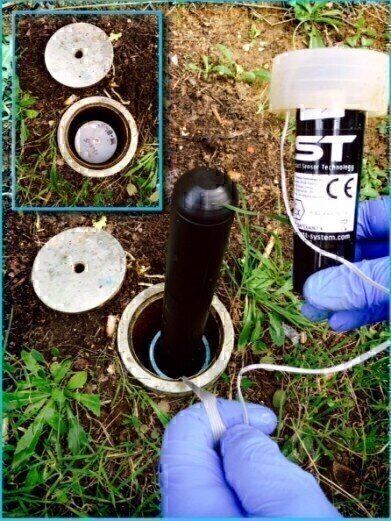Water/wastewater
New System for Early Warning of Hydrocarbon Leaks though Existing Monitoring Wells
Jan 18 2016
CLH Group, installs an innovative technology developed by Smart Sensor Technology (Italy) for early warning of hydrocarbon leaks though existing monitoring wells.
CLH Group has been a pioneer in implementing a new hydrocarbon leak detection system in water using a net of existing monitoring wells. The company has installed its technology in 12 facilities in 2015.
According to CLH Environment and Security Head, Fernando Garcia, “this technology entails a perfect complement to all our efforts to be at the forefront of environmental best practices”.
The system consists in a grid of wireless sensors installed in existing monitoring wells. These sensors float in the air-water interface and they broadcast, once per day or the desired period, the signal to be visualised from any computer or mobile device.
The sensors work using a Physical-Chemical reaction to avoid false alerts. The sensor also allows to know the type of contaminant as well as it retains a physical evidence of the contamination.
The devices are ATEX certified and communicate between them in 868 MHz frequency. They are IP68 and they last 10 years with the same battery.
The system is completely wireless and if needed it can use repeaters to cover big distances till it connects to the GRPS control unit. The control unit is installed inside the client’s office and connects to the cloud for easy access.
The devices are extremely easy to install. Just drop the sensor inside the piezometer (from 2” and over) and set the transmitter in the top of the monitoring well. The installation takes no more than 10 minutes for each piezometer and no civil work is necessary.
The operating range of the transmitters is about 100m. But if they are below the metallic chamber of the monitoring well the signal strength is reduced to only a few meters. In this case a simple repeater is installed near the emitter in order to extended the signal up to 100m. You can use more than one repeater to reach several hundreds meters.
The control unit is installed in the client’s office where it collects raw data from the sensors, finally all this information will be sent to a server in order to be available from any computer and mobile device through a cloud based solution.
According to Alvaro de Fresno, Technical Manager of Grupo Hera Tratesa S.A.U., the installation of 12 sensors across a facility can take 2h approximately in standard conditions.
The technology is very affordable and allows companies to have a very efficient continuous online monitoring system at a fraction of the of other alternative solutions says Santiago Ramas, CEO and Co-Founder of Smart Sensor Technology.
Digital Edition
AET 29.2 May 2025
May 2025
Water / Wastewater- From Effluent to Excellence: Microbiological assessment of a containerized modular water reuse pilot system- Without water everything comes to a haltAir Monitoring- Probe Sampli...
View all digital editions
Events
Jun 08 2025 Denver, CO, USA
Jun 09 2025 Raleigh, NC, USA
Jun 10 2025 Toulouse, France
Jun 11 2025 Copenhagen, Denmark
Jun 17 2025 Guangzhou, China

_1000x1500.jpg)


.jpg)



.jpg)










